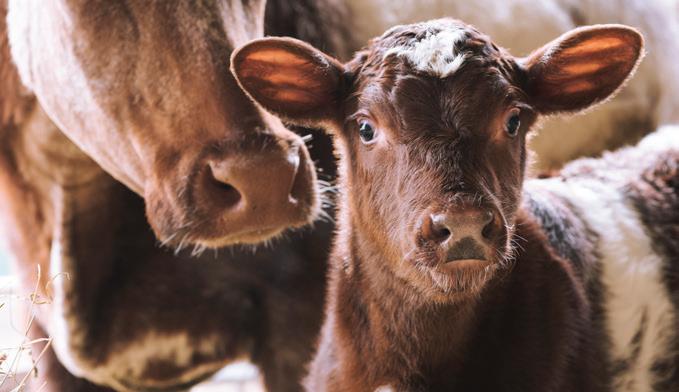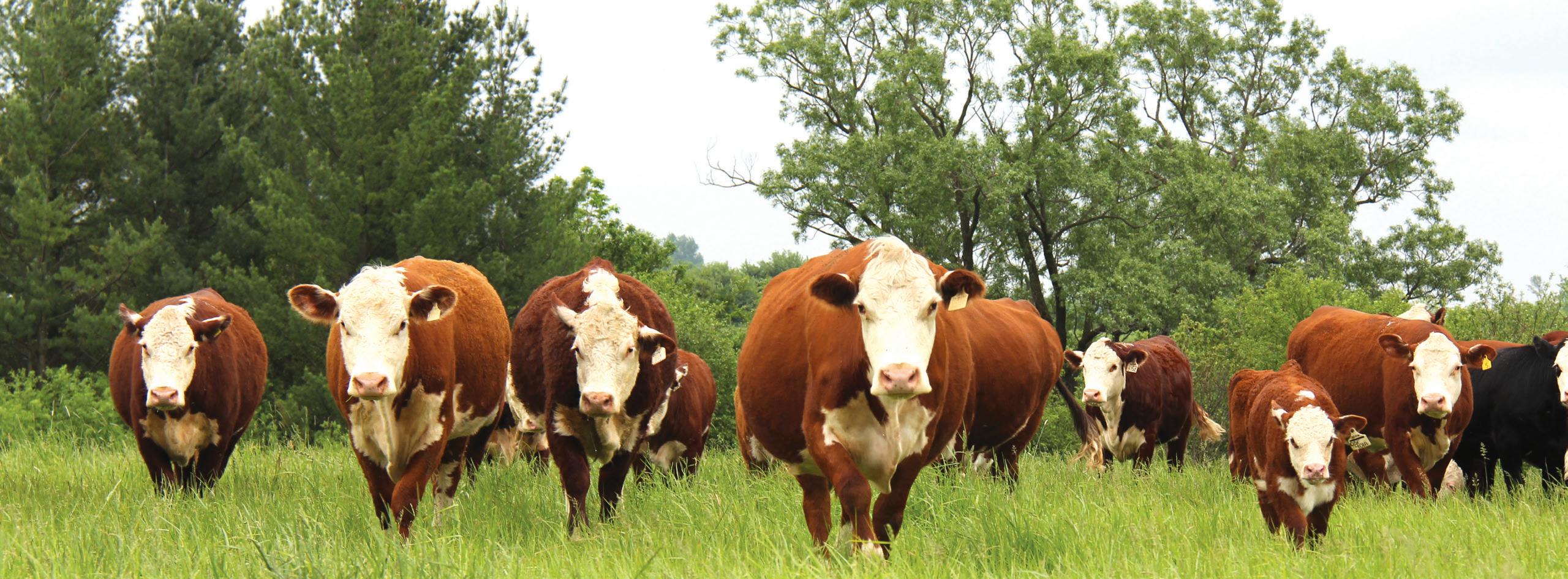Dear Friends,
We trust that you have enjoyed a great Christmas time with your family and friends. This year we have been challenged with extreme cold weather events which has been unusual. However, winter in Canada often creates challenges for both man and his livestock. Working with our livestock we must be diligent in taking good care and following good management practices to ensure maximum profitability. Recently I came across an article in The Progressive Dairy Farmer which I want to share with our readers. The title of the article is “The Inside Story: Cows and Cud” by Dr. Ken McMillan.
Question:
When we had a cow that was sick, my grandfather would say, “She’s lost her cud.” He liked to see most of the cows laying down and chewing their cud. He seemed almost obsessed with this, but I have never known why cows chew their cud, and is it as important as he thought it was?
Answer:
Cud chewing is an essential part of what makes ruminant a ruminant. The rumen is this giant fermentation vat where microorganisms break down parts of forages that simple-stomached animals can’t digest. These microorganisms also allow ruminants to utilize non-protein nitrogen (urea) to manufacture protein.
by: DAVID LAMB, DVM, BSC. Technical Beef Consultant
Hearing the term “calf scours” is enough to raise the stress level of any beef farmer, but actually experiencing an outbreak during calving causes a lot more problems than just stress. The economic impact of reduced weight gain, loss of life, treatment cost all hit the farms bottom line. Approximately 45% of all treatments given to calves before pasture turn-out are scour related and calves treated for scours on average weigh 24lbs less than herd mates who did not have scours.2 Calf scours are a perfect example of where an ounce of prevention is worth more than a pound of cure (literally and figuratively) .
Calf scours, also known as neonatal calf diarrhea, is a broad term used to describe the clinical signs of a multifactorial disease complex. Scours are caused when fluid movement across the gut wall is interrupted and fluid is excreted out of the calf, resulting in dehydration. Bacteria, viruses, and protozoa are the causes of pathogenic scours. These pathogens are found on most farms, and can be very difficult and time consuming to treat.
It is often said that the best treatment for scours is prevention; this requires a two-pronged approach. The first step involves maximizing the calf’s acquired immunity, while the second method requires limiting exposure of the calf to the pathogen. Increasing immunity is achieved by providing sufficient high quality colostrum to the calf at birth and providing protection in the form of vaccines and high quality nutrition.
Colostrum production starts 6 weeks before calving; this is when the antibodies from the dam’s blood stream are moved into the udder, antibodies are then passed to the calf in the colostrum. Using a scour vaccine to raise the antibody levels in the dam for scour specific pathogens is an important part of protecting your herd. Using a vaccine
When cattle consume grasses or hay, it enters the rumen, and the digestion process begins. When the cow is resting, she will regurgitate a bolus of this semi digested food and chew on it. This process breaks down the forage particles making them more available to rumen microbes. Equally important, this produces a huge amount of saliva, which has an alkaline pH. When the saliva is swallowed, it acts as a buffer and keeps the rumen pH from becoming to acidic.
High levels of grain in rations decrease rumen pH and change the balance of rumen microbes to those that are more efficient at digesting carbohydrates. If cattle don’t get enough long-stem fibre, cud chewing is reduced. That increases the chance of a digestive disorder called rumen acidosis. With acidosis, the whole rumination process is reduced or collapses, and the cow stops eating. This can be very serious and, in some cases, even life-threatening.
So, your grandfather was right. Cud chewing is important and a sign of healthy cows. The rumen is your cow’s best friend. It’s what gives her the advantage over other simple-stomached livestock. To take care of cattle, we must understand and take care of that rumen.
Wishing you good farming and safe planting!. Sincerely on behalf of all our Grand Valley Fortifiers’ staff, Jim Ross,
Founder & Chairman
that allows for the protection for the full duration of your calving season is critical. Talk with your veterinarian about your vaccine strategy.

Reducing exposure
to pathogens is easier said than done, however the time and effort does pay great dividends in the end. This can be achieved by following these guidelines:
Ensure calving pens are cleaned/bedded regularly, this includes a yearly complete cleanout
• Separating/isolating any sick cow calf pairs from the herd – sick calves shed a very high number of pathogens
• For producers calving on pasture, moving your cows that have not calved to new ground every 5–7 days (Sandhills Calving System)
• Do not winter your cattle in the same place as they will calve
• Ensure calving areas are on higher ground if calving on pasture
If prevention has failed and you are experiencing calf scour problems, work with your veterinarian and nutritionist to develop intervention plans and treatment protocols. Replacing fluid loss is essential, and early and aggressive supportive treatment may be the difference between life and death in young calves. n

FORAGE AND CORN SILAGE QUALITY IN 2017
by: MARK BOWMAN Senior Ruminant Nutritionist and AMY SOVA Ruminant Nutritionist, Grand Valley Fortifiers
When W ith winter underway and harvest complete, now is the time to assess quality of corn silage and hay crops. These forages will be an essential component of winter feeding programs and dictate the extent of grain supplementation that is needed to achieve expected growth levels. Forages can vary greatly in quality due to weather, forage variety and harvest conditions. Sampling of these feeds can help us assess forage quality and plan when and where to use these feeds to meet performance goals. Our ration balancing philosophy is to maximize forage content of rations in order to minimize purchased feeds while meeting your goals. Fortunately, we have the software and laboratory feed analyses to help assess how feeds will perform on farm to help you to reach those goals.
Forages are the base of the ration and supply a large amount of digestible energy and protein as well as essential fiber to maintain rumen function. The quality of forage largely dictates how much forage cattle can consume and how much concentrate we will need to supplement. Neutral detergent fiber (aNDFom) is easily measured by labs and is the basic predictor of forage intake. NDF is a measure of plant cell wall components and consists of cellulose, hemicellulose and lignin. NDF is dependent on plant species and maturity. Lignin is indigestible in the rumen and increases as the plant matures. This results in reduced digestibility and energy content of the feed with increasing maturity. Total digestible nutrient (TDN) is a calculated lab value on your forage assay that reflects the energy value of feed and is a good comparison tool when evaluating your on farm feeds. For example, dry corn has a TDN value of 87% and corn silage has an average TDN of 71%. Supplementing dry corn is an effective way to add energy to a diet to meet maintenance and gain requirements if your animals are not maintaining condition or achieving the growth you are looking for.
More recently, we have been measuring NDF digestibility (NDFD) as a better predictor of forage intake potential. Lab analysis measures NDFD at three time points- 30hr, 120hr and 240hr which is the portion of NDF that is digested at those different time points in the rumen. The 30hr NDFD is the “fast” pool of fiber and the 240hr NDFD is the indigestible NDF portion. Ultimately, the indigestible fiber pool is the limit to how much forage cattle can eat. Feeding forages with lower NDFD 240hr will limit forage intake and performance if we don’t supplement more grain. Using dry corn to replace forages with poor digestibility may be needed to achieve desired weight gain or maintain condition of animals.
Table 1 reports the average NDF, TDN and forage digestibility characteristics for forages sampled by Grand Valley Fortifiers. As you can see, corn silage has lower NDF values and has higher NDFD than haylages. Within the haylage category, grassier haylages contain higher NDF content than alfalfa haylages but are also more digestible than alfalfa haylages.
Table 1. Grand Valley Fortifier Averages
Corn Alfalfa Mixed Mixed Silage Haylage Alfalfa Grassy Haylage
on average than last year (32.2 vs 35.7 %). In addition to lower energy value this year, we are dealing with lower NDF digestibility. The 30-hour NDF digestibility for 2017 corn silage was 6.7 units lower on average (53.2 vs 59.9%). This means that forage intake potential on new crop corn silage will likely be lower. In combination, the increased fiber levels and decreased starch and NDF digestibility levels results in the need to supplement more energy to cattle this winter to meet our performance goals. For example, if your winter ration typically doesn’t include much grain, this year may see a change in the amount of grain needed for nursing cows and growing feedlot cattle or replacement heifers. However, the extent of reduction in corn silage quality will vary by farm and region and not all farms will suffer from lower corn silage quality. Test your corn silage to assess fiber, starch and fibre digestibility levels so that the appropriate adjustments can be made.
A Closer Look at Corn Silage
High quality corn silage has high intake potential and energy content, requiring only supplementation of protein, minerals and vitamins to achieve high daily gains in growing feedlot cattle. For example, 800 lb steers could eat 44 lbs of corn silage and 4 lbs of protein and mineral/vitamin premix ingredients and achieve 3 to 4 lbs average daily gains depending on the type of cattle and management. Therefore, consideration needs to be given to corn silage quality when selecting seed corn hybrids for the next year.
Corn silage hybrids should be chosen with the goal of maximizing beef production per acre for maximum profitability. This requires selection of hybrids that will achieve both high yield per acre and that have high starch content and NDF digestibility, which will result in high beef production per tonne of silage. Corn silage feeding value for dairy cattle is reported as milk per tonne of silage dry matter, which is calculated from silage quality as described above, and as milk per acre, which multiplies the milk per tonne by the yield per acre. These assessments of silage quality and yield also apply directly to beef production. Therefore, chose a corn silage hybrid that is at least average or higher for yield per acre, starch content and NDF digestibility.
Other important criteria for corn hybrid selection include heat units required for maturity and agronomic traits such as disease and pest resistance, drought tolerance and susceptibility to molds and mycotoxins. Some of these traits will be specific to your area and others will apply most everywhere. Ask your seed company representative for data and recommendations on these characteristics and consider this along with your own experience on your farm.
Mycotoxins are often overlooked, but are very prevalent in the corn crop most years and can impair cattle performance and health if present at high levels. Symptoms include reduced or erratic feed intake, loose manure, poor hair coat and general dullness, lack of thrift and increased disease as mycotoxins challenge the immune system. Reduced average daily gain will result in growing cattle and reproduction may be impaired in heifers and cows. Therefore, if your cattle are showing these symptoms don’t overlook mycotoxins as a possible cause and investigate potential solutions with your Grand Valley Fortifiers representative. n





